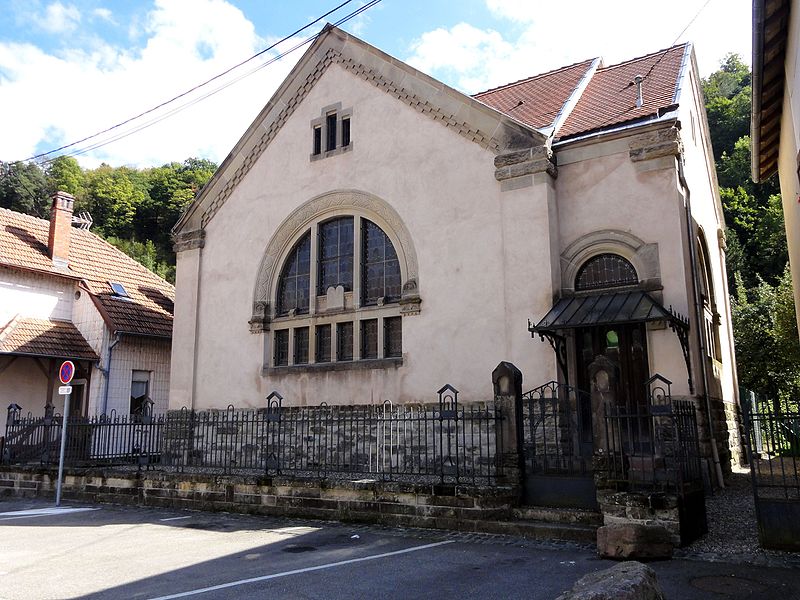In 1905, a wood merchant sold his land, on which a synagogue was built. At that time there were 36 Jews in Schirmeck, 23 in La Broque and 19 in Wisches. The synagogue allowed the Jewish inhabitants of Schirmeck and the surrounding villages to have a place of worship for a community of 79 people.

The Schirmeck cemetery was opened to the Jewish community in 1895. Previously, the Jews were buried in the cemetery of Rosenwiller. The Jewish section of the Schirmeck cemetery contains 54 graves. The last burial took place in 1979.
During the Holocaust, the synagogue was ransacked. The official reopening took place in 1946. The declining number of members led to the closure of the synagogue at the end of the 1970s, and the place was only used for summer camps. Restoration work was undertaken in 2006 on the facades and the roof. Then, having been one of the winners of the “Engaged for Heritage” prize in 2021, the restoration, already set up by a support committee, received significant support from the Heritage Foundation.
The work carried out in 2022, allowed the installation of a wooden ceiling, interior walls and an emergency exit. Jacques Ruch, president of the Association of Friends of the Schirmeck Synagogue, received a call in 2016 from a man whose grandfather had been a rabbi and liberated the town with American troops. He told him that the Torah that was in the synagogue at the time had disappeared and was currently in Israel. This Torah will find its place in the synagogue of Schirmeck during the European Days of Jewish Culture, marking also the reopening of the place.
In 2024, the foundation stone for the Wall of Names was laid. This monument, located near the Alsace-Moselle Memorial and designed by the architect Benoît Zeimett, will bring together the names of the 36,000 dead from Alsace and Moselle killed during the Second World War, who can be accessed on the memoires.grandest.fr website.
Sources : judaisme.sdv, dna.fr, france3-regions